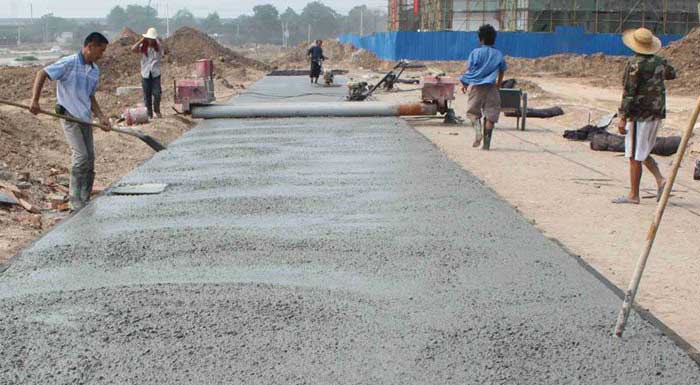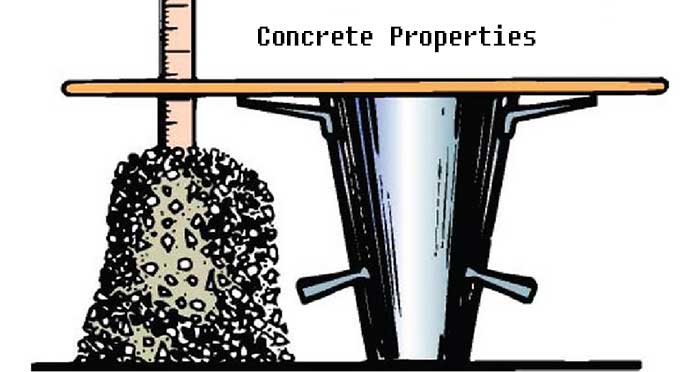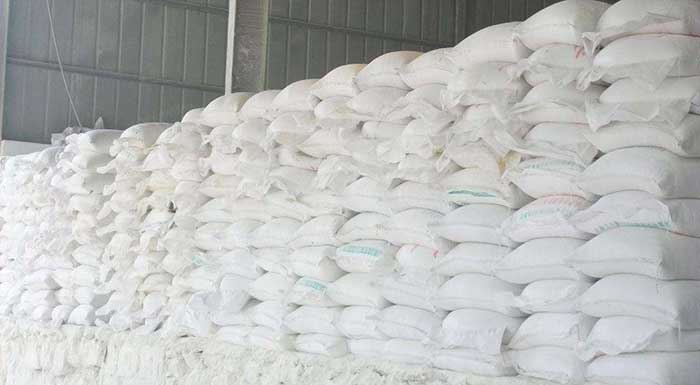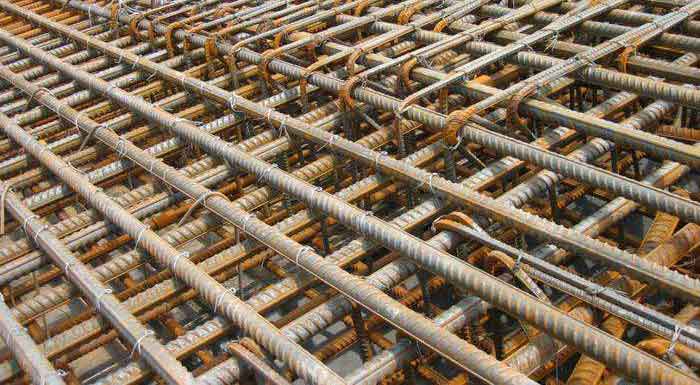How To Classify Concrete [Classification, Manufacturing & Properties]
Concrete refers to the use of cementitious materials to bind coarse and fine aggregates into a whole composite solid material. There are many types of concrete and many classification methods.

Classification by Concrete Density
Concrete can be divided into three types according to its density:
① High-density Concrete
It refers to concrete with density greater than 2600 Kg/m³. It is usually made of high density aggregate (such as barytes , iron ore, steel chips, etc.) or heavy cement (such as barium cement, strontium cement, etc.). Because it is mainly used as radiation shielding structural material in atomic power plants, also known as radiation-proof concrete.
② Ordinary Concrete
It refers to concrete with density of 2000-2600 Kg/m³. It is usually made of cement as cementitious material and natural sand and stone as aggregate. It is the most commonly used cement concrete in civil engineering at present.
③ Lightweight Concrete
It refers to concrete with a density of less than 1950 Kg/m³, usually using porous lightweight aggregate such as ceramsite or concrete without porous aggregate and foam agent. According to its performance and purpose, it can be divided into structural lightweight concrete, thermal insulation lightweight concrete and structural thermal insulation lightweight concrete.

Classification by Cementitious Materials
① Inorganic Cementitious Concrete
Inorganic cementitious concrete includes lime silica cementitious material concrete (such as Portland concrete), Portland cement system concrete (such as Portland cement, ordinary cement, slag cement, fly ash cement, volcanic ash cement, early strength cement concrete, etc.).
Calcium-alumina cement series concrete (such as high alumina cement, pure aluminate cement, shotcrete, super-speed hard cement concrete, etc.), gypsum concrete, magnesia cement concrete, sulfur concrete, sodium silicate silicate water glass concrete, metal concrete (using metal instead of cement as cementing material), etc.
② Organic Cementitious Concrete
Organic cementitious concrete mainly includes asphalt concrete and polymer cement concrete, resin concrete, polymer impregnated concrete and so on. In addition, inorganic and organic composite colloidal material concrete can also be divided into polymer cement concrete and polymer indigo concrete.
Classification by Use
According to the different uses of concrete in engineering, it can be divided into structural concrete, hydraulic concrete, marine concrete, road coagulation, waterproof concrete, compensatory shrinkage concrete, decorative concrete, heat-resistant concrete, acid-resistant concrete, radiation-proof concrete and so on.

Classification by Strength Grade
According to the compressive strength of concrete, it can be divided into low-strength concrete (strength ≤ 30 MPa), medium-strength concrete (strength 30-60 Mpa), high-strength concrete (strength ≥ 60 MPa) and ultra-high-strength concrete (strength ≥ 100 MPa).
Classification by Production and Construction Methods
Different types of concrete are produced based on the different production and construction methods of concret, it can be divided into Ready Mix Concrete, Pumped Concrete, Shotcrete, Stamped Concrete (Ready Mix Aggregate Concrete), Roller Compacted Concrete, Centrifugal Concrete, Vacuum Concrete, etc.
In addition, according to the amount of cement (C) per cubic meter of concrete, it can be divided into lean concrete (C < 170kg/m³) and rich concrete (C < 230kg/m³). There are special concrete mixed with other auxiliary materials, such as Fly Ash Concrete, Fiber Concrete, Silica Fume Concrete, Blast Furnace Slag Concrete, Silicate Concrete, etc.

Classification by Quota
① Ordinary Concrete
Ordinary Concrete is divided into Ordinary Semi-dry Concrete, Ordinary Pumped Concrete and Underwater Concrete. Each of them is divided into Gravel Concrete and Pebble Concrete.
② Freeze-resistant Concrete
Freeze-resistant Concrete is divided into Freeze-resistant Semi-dry Concrete and Freeze-resistant Pumped Concrete. Each of them is divided into Gravel Concrete and Pebble Concrete.
Concrete Manufacturing Process
When preparing concrete, first, according to the requirements of workability, strength and durability of concrete, raw materials should be selected reasonably and their mixing proportion should be determined to achieve the purpose of economic application.

1. Determination of Water-cement Ratio
The calculation of water-cement ratio of high-strength concrete should be based on the statistics of test data, and the relationship between concrete strength and water-cement ratio should be put forward. Then the water-cement ratio corresponding to concrete strength (fcu.0) can be calculated by graphic method or calculation method.
When several different mix ratios are used for concrete strength test, one of them should be the base mix ratio, and the water cement ratio of other mix ratios should be increased and decreased by 0.02-0.03 respectively compared with the base mix ratio.
2. Aggregate PHR
(1) PHR of gravel/m³ (G0): Dosage of gravel per cubic meter (VS) of high strength concrete ranges from 0.9 – 0.95 m3, so the dosageof gravel per cubic meter is: G0 = VS * gravel bulk density.
(2) PHR of sand/m³: S0S0=[G0/(1-QS)] QS, QS-sand rate, which should be determined by experiment, usually controlled in the range of 28-36%.
3. Water Consumption
When calculating the mix ratio of high-strength concrete, the water consumption of high-strength concrete can be revised by the water reduction rate method based on the water consumption of ordinary concrete.
The water consumption of concrete without admixture is deducted from the water reduction rate of admixture, which is the water consumption of concrete with water reducing agent.
At this time, attention must be paid to determine the water reduction rate of the admixture through experiments.
4. Cement Dosage
When producing high strength concrete, the amount of cement is very important, which directly affects the bonding force between cement mortar and aggregate.
In order to increase the proportion of resin binder in mortar, the cement content should be relatively high, but it should be noted that the amount of cement should not be too high, otherwise it will cause problems such as excessive heat release rate or excessive shrinkage during hydration.
In general, the amount of high strength concrete cement should not exceed 550 kg/m3.
5. Trial Mixing Adjustment
The calculated mix ratio results should be verified by trial mixing. The test mixing amount not less than 1/4 of the mixer rating. The mixing method of concrete and admixture mixing method should be consistent with the actual production method.
6. Determination of Mix Ratio
When the absolute value of the difference between the measured density and the calculated value of the mixture does not exceed 2% of the calculated value, need not adjusted. After the concrete mix ratio is determined, no less than 6 repeated tests should be carried out to verify the mix ratio.
7. Transportation and Grouting
Transportation: Concrete mixtures can be conveyed to the work site by hopper, belt conveyor or concrete mixer truck.
Transportation requirements:
- Concrete homogeneity should be maintained to avoid delamination and segregation.
- Minimum number and time of operation.
- Continuous grouting should be guaranteed.
- Mixing tank should be tight and no leakage.
Its grouting method can be manually or mechanically. Concrete pumps are used to transport and grout concrete mixtures with high efficiency, which can reach hundreds of cubic meters per hour.
8. Concrete Curing
The purpose of curing concrete is to create appropriate temperature and humidity to ensure or accelerate the normal hardening of concrete. Different curing methods have different affects on concrete performance.
Common curing methods include natural curing, steam curing, dry-wet-hot curing, autoclave curing, electric-thermal curing, infrared curing and solar energy curing. The last time of curing is called curing cycle.
Concrete Properties

1. Concrete Workability
The workability of concrete is a comprehensive technical property that includes fluidity, cohesiveness, and water retention. Usually, the flowability of concrete mixtures is measured, supplemented by other methods to comprehensively evaluate the workability of concrete mixtures.
2. Concrete Compressive Strength
The compressive strength of concrete is a cubic specimen with a side length of 150mm, which is subjected to pressure until failure under certain conditions at a temperature of 20 ℃± 3 ℃, relative humidity>90%, or curing in water for 28 days. The compressive strength of concrete is determined by the pressure borne per unit area of the specimen.
3. Concrete Tensile Strength
The tensile strength of concrete is 1/10-1/13 of its compressive strength
4. Concrete Deformability
Including chemical shrinkage, dry shrinkage and wet expansion, temperature deformation, load deformation, elastic-plastic deformation, and creep, concrete exhibits creep phenomena regardless of whether it is under compression, tension, or bending.
5. Concrete Durability
The durability of concrete refers to its ability to resist environmental media while maintaining its shape, quality, and applicability, including its impermeability and frost resistance.
6. Concrete Corrosion Resistance
The erosion of concrete by environmental media is mainly the erosion of cement stone, usually including soft water erosion, acid, alkali, and salt erosion.
 How To Classify Cement ?
How To Classify Cement ? 20 Common Types of Cement [Properties & Uses]
20 Common Types of Cement [Properties & Uses] Cement VS Concrete [8 Difference Between Cement and Concrete]
Cement VS Concrete [8 Difference Between Cement and Concrete] 5 Concrete Structure Defects [Causes & Prevention & Repair]
5 Concrete Structure Defects [Causes & Prevention & Repair]




My friend is interested in building his dream home this year, and he wants to learn more regarding construction materials. What you said about how there are various types of concrete, such as ready-mix and pumped concrete, is very interesting. I believe he could use this information once he finalizes the design he likes for the home.
I like that you explain how a pump is an efficient way to transport and grout concrete. If someone wants to use this method, it would probably be a good idea to find a local company that specializes in concrete pumping. This could ensure they can get to you easily and have the necessary materials and equipment to provide the concrete services you want for your project.
Thanks for your comment, Your proposal is really in line with the concrete project.